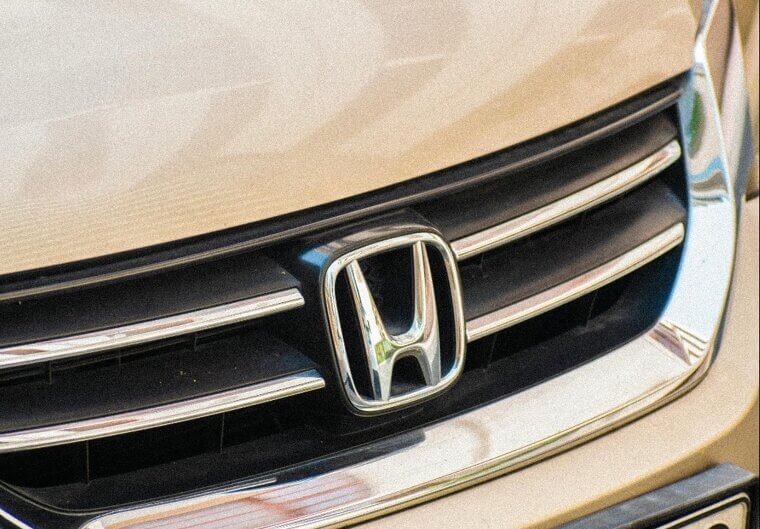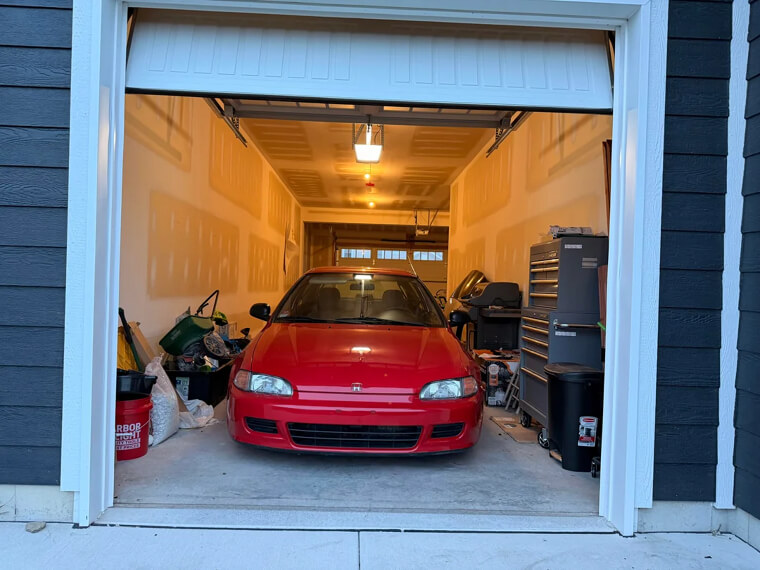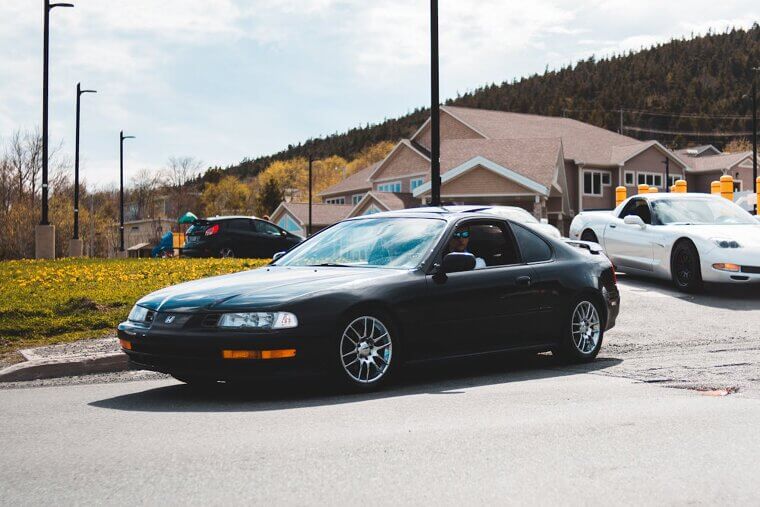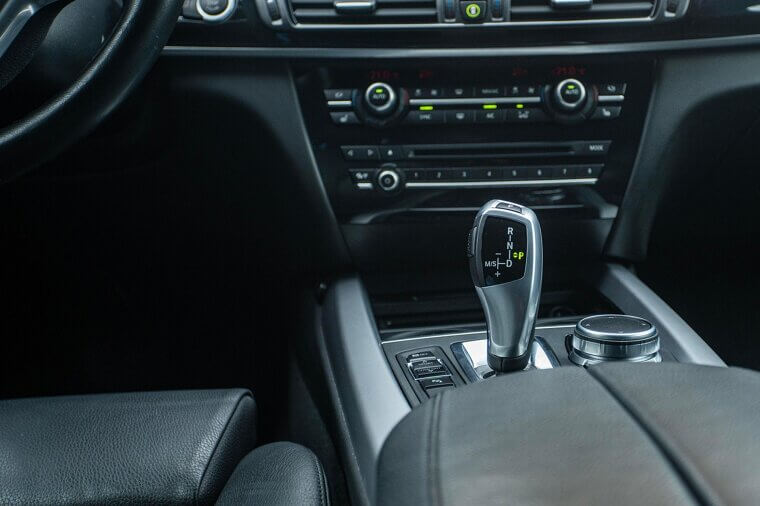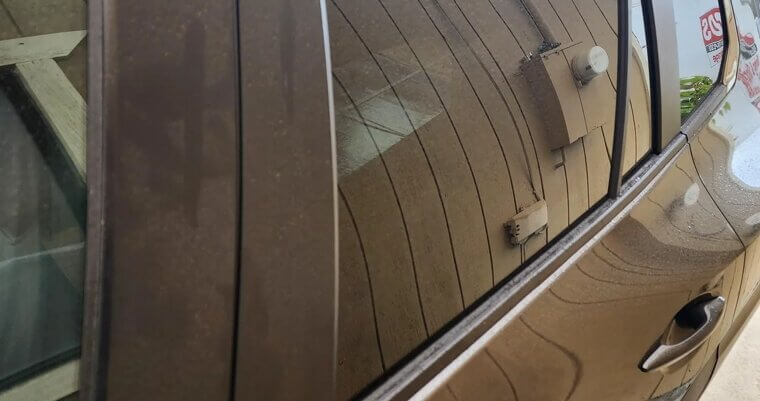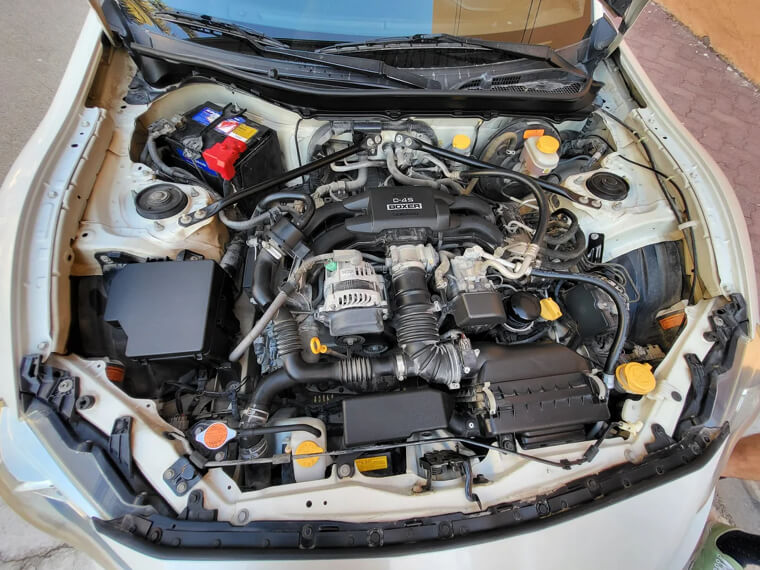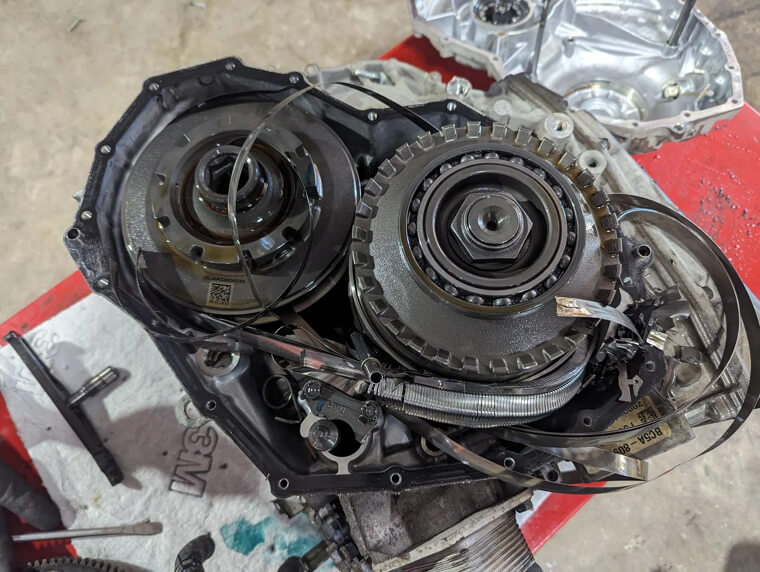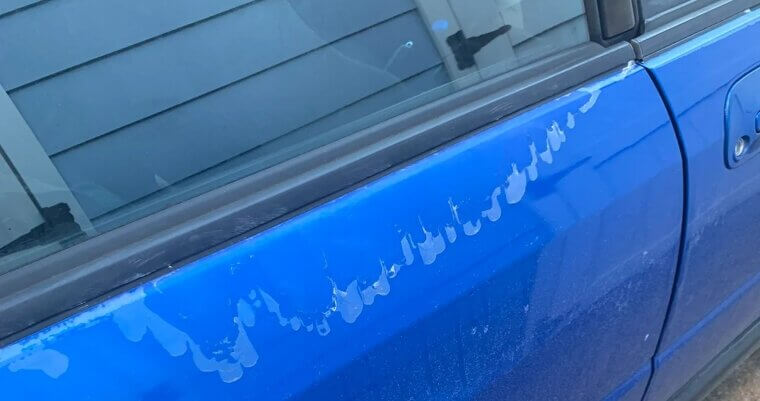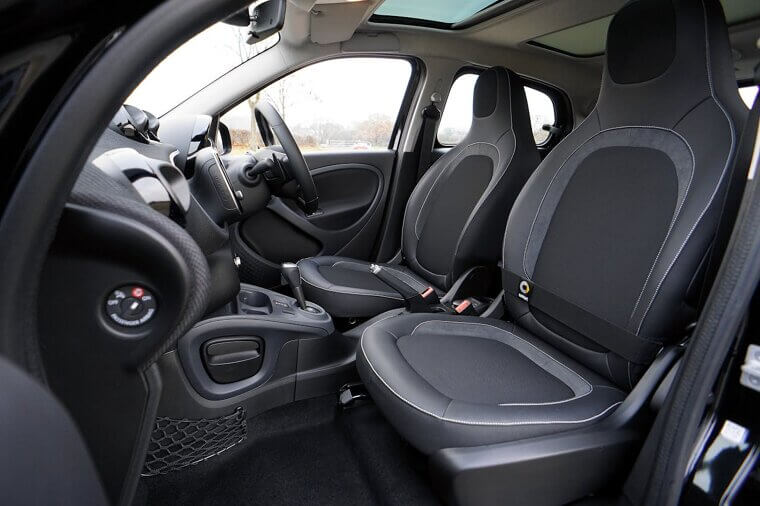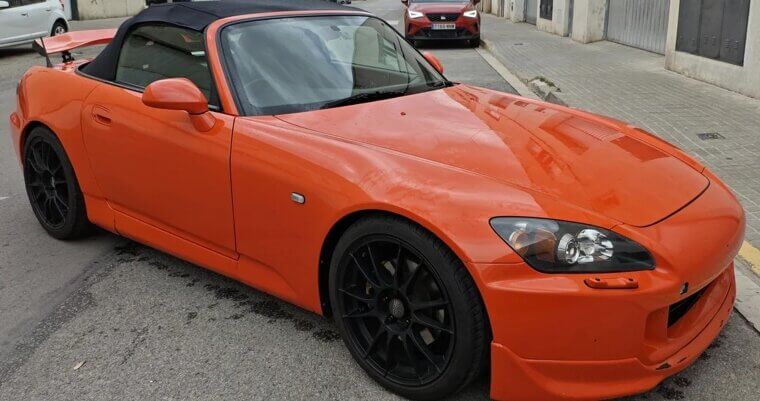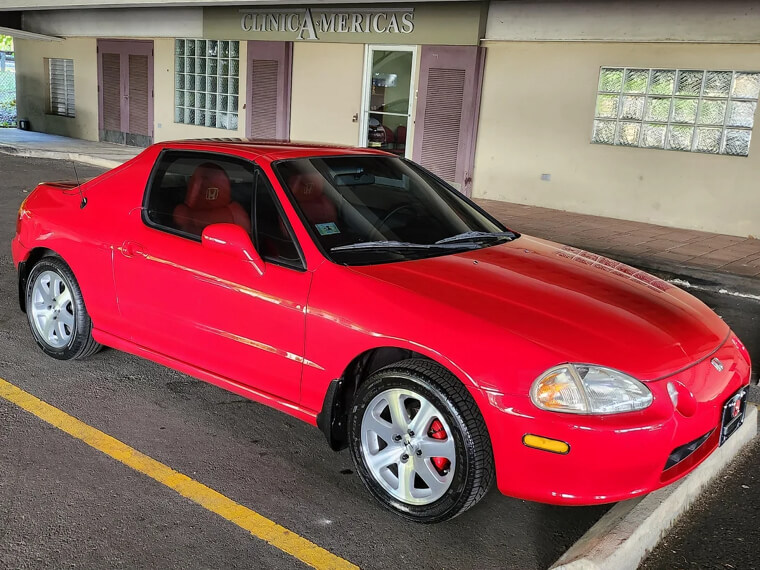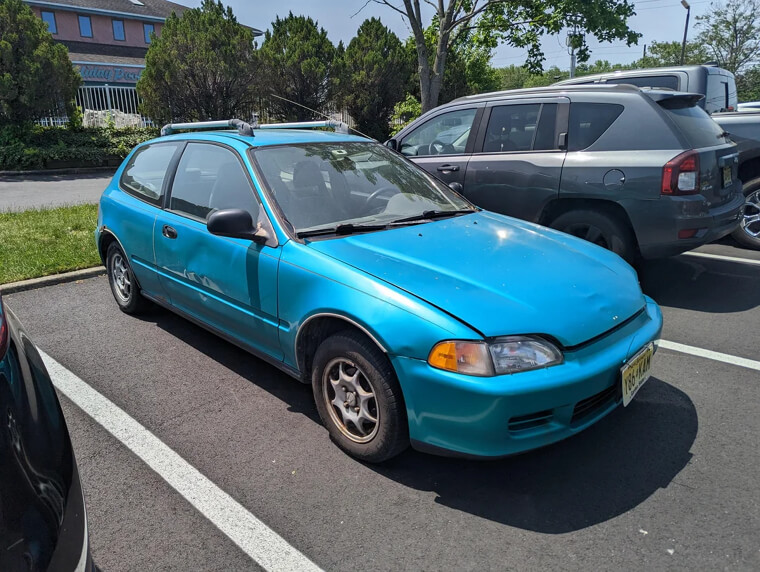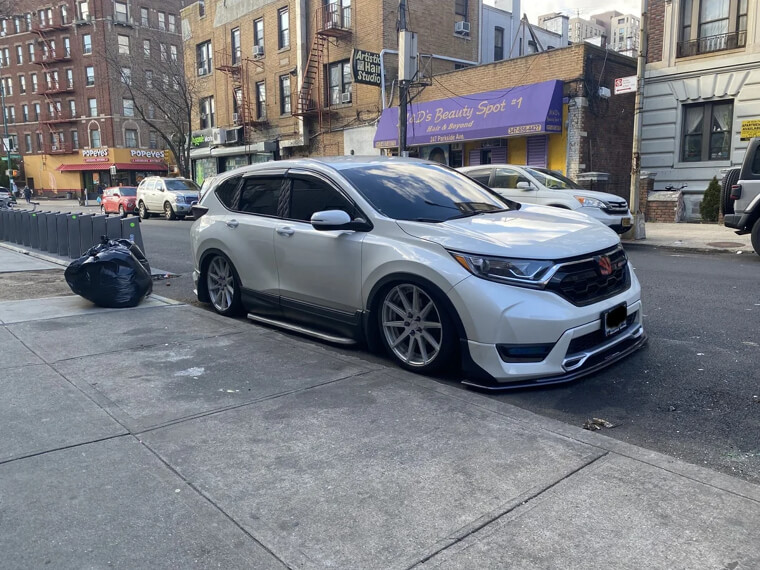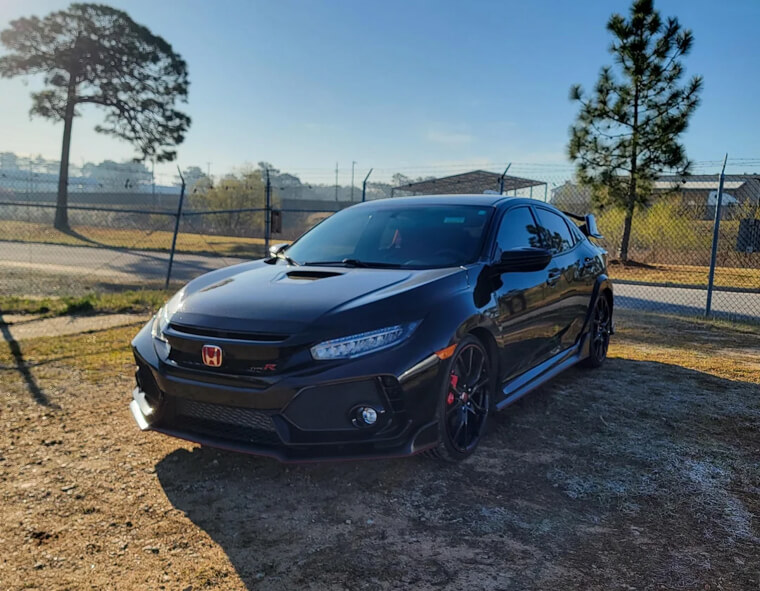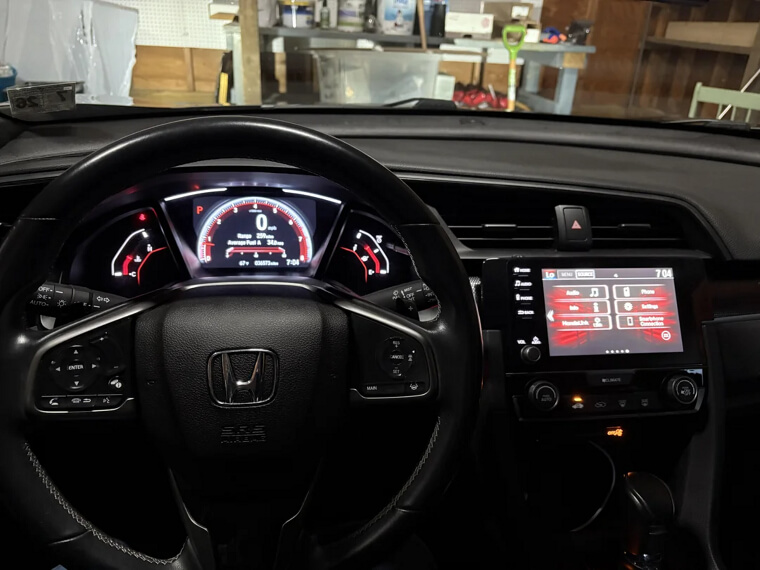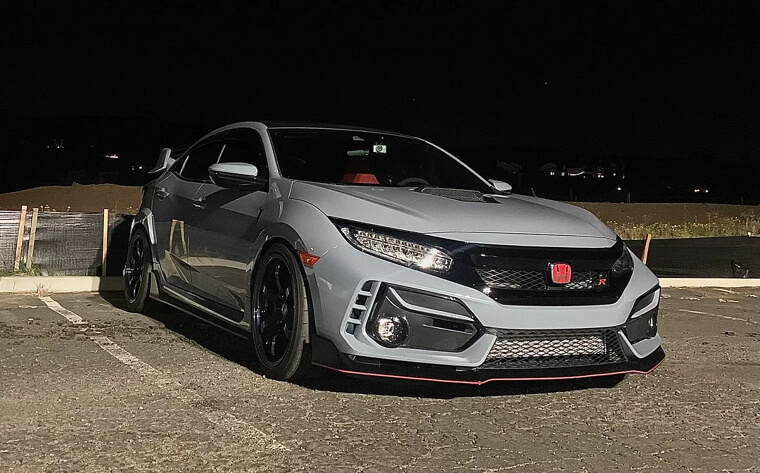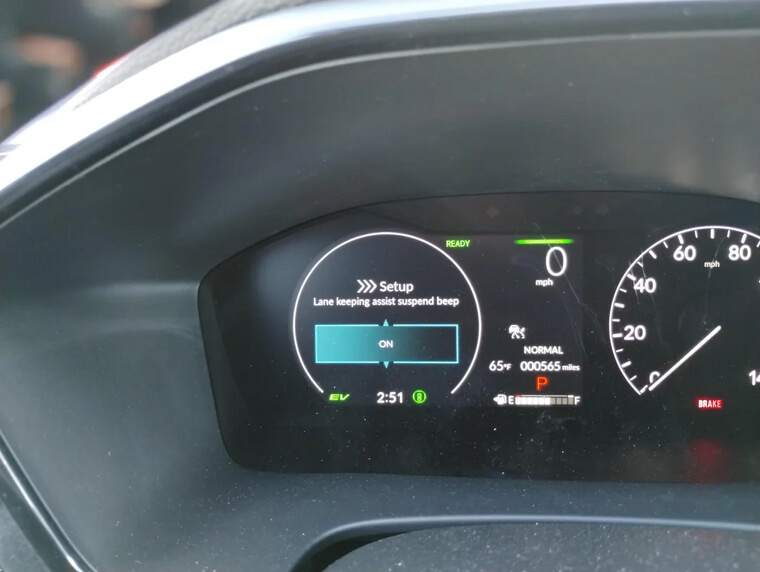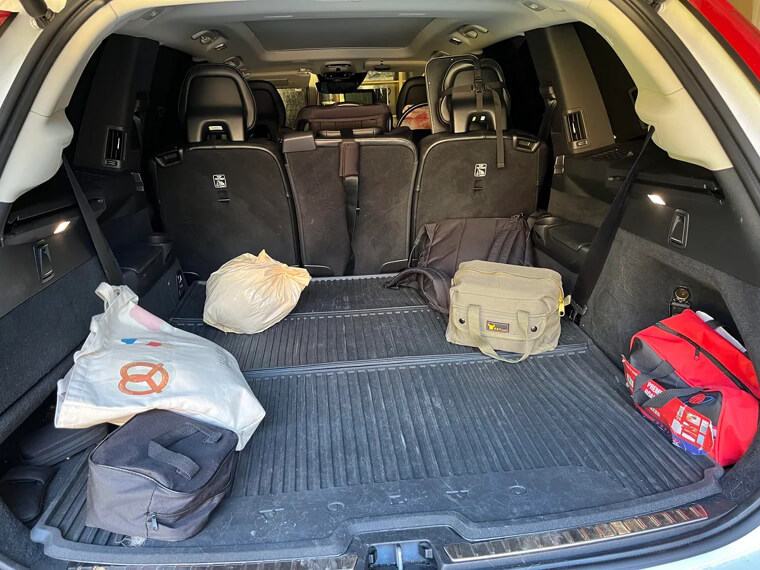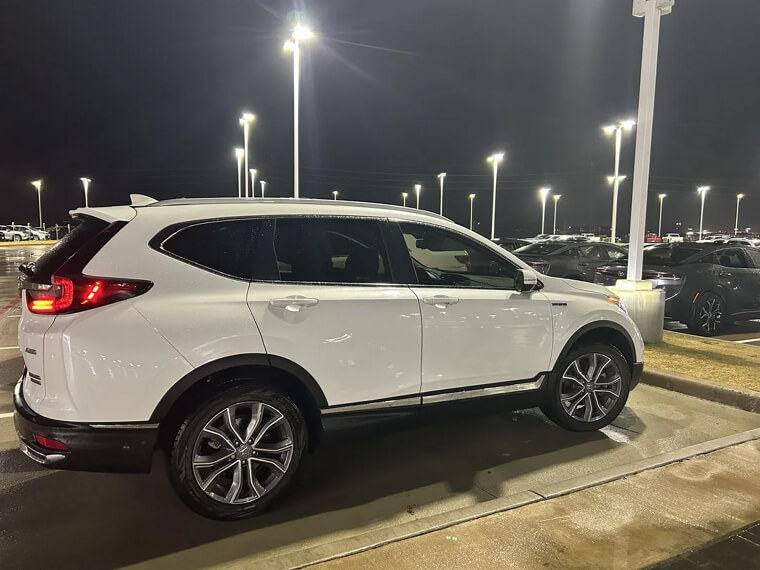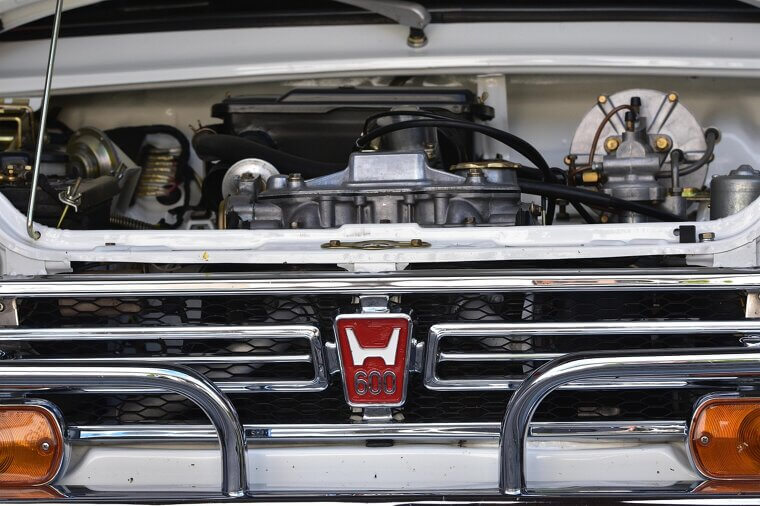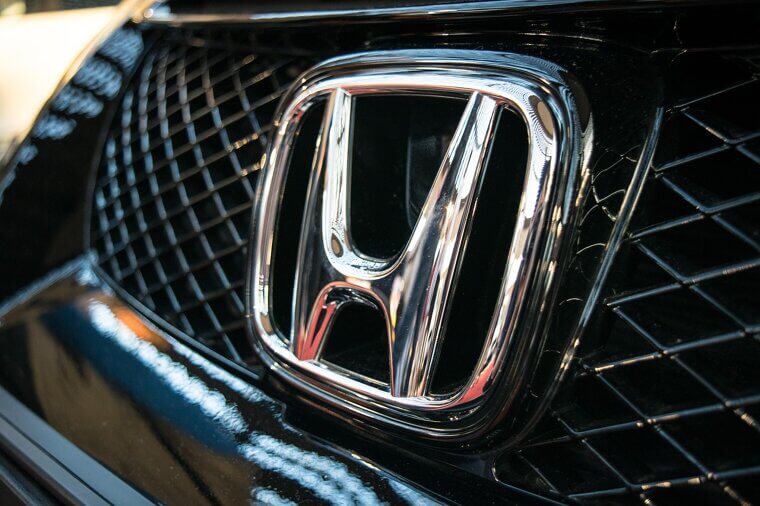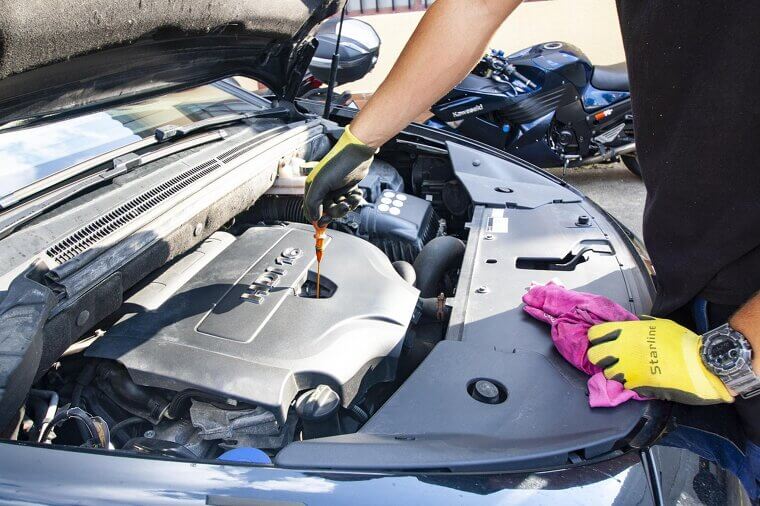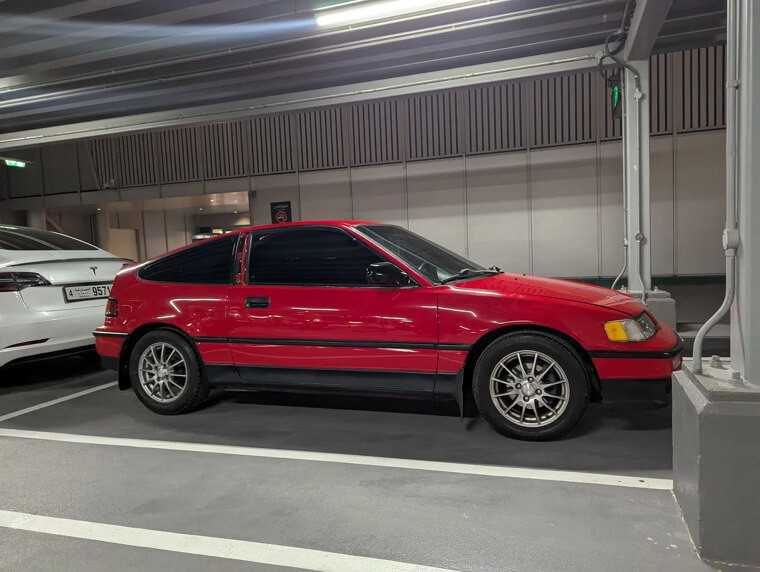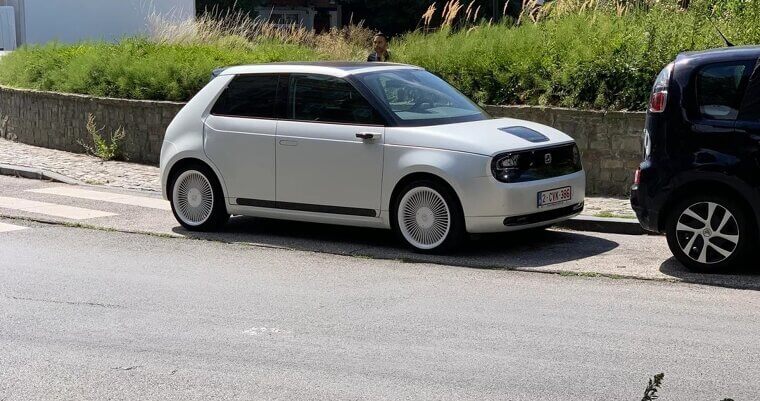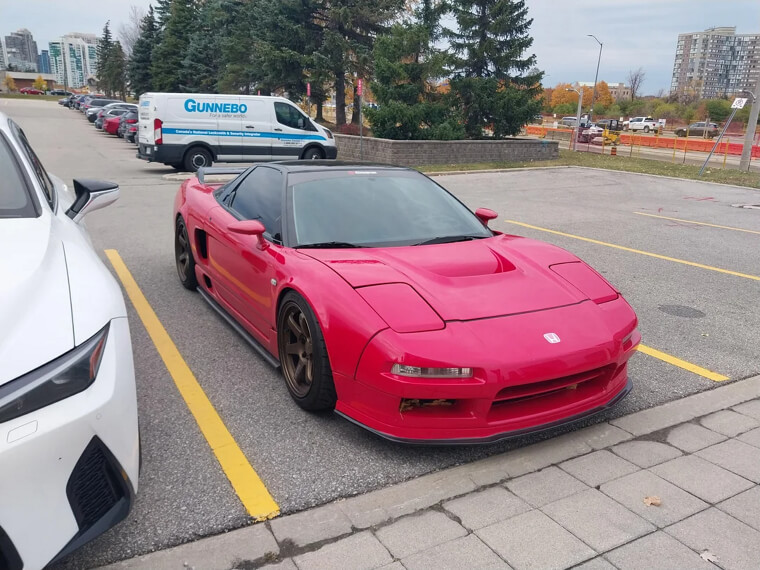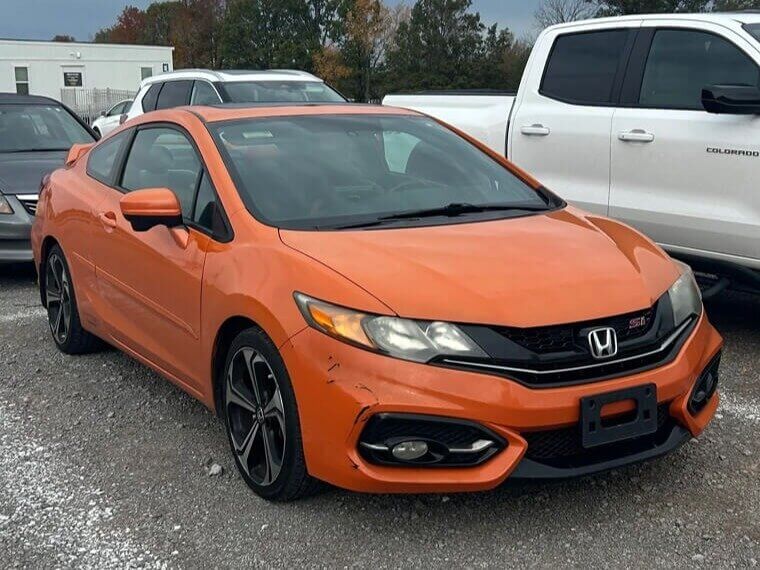The Sticker Shock on Some Models
Once known for affordable pricing, newer Honda models have crept up in cost. For some buyers, that’s a surprise at the dealership. When an Accord or CR-V can easily top $40,000, you start to wonder whether you’re paying for the name rather than true luxury. The value is still there, but it’s not the budget buy it used to be. Even loyal fans miss those simpler price tags.
Basic Trims Feel Bare
Honda’s base models often miss convenient features like heated seats or premium audio that competitors now include. Upgrading fixes it, but that means a higher price tag. Drivers looking for a great deal can feel short-changed when they realize what’s missing. Long commutes or family road trips can highlight how much sound filters through, reminding you that silence inside the cabin is still a work in progress. You might start naming the squeaks for company.
The Ride Can Feel Too Firm
Even though Hondas are known for sporty handling, some owners find the ride quality a bit stiff on rough roads. What feels “responsive” on paper sometimes translates to “bumpy” on your morning commute. Comfort-seekers often wish for a softer suspension. Over long drives, the firmness can become tiring, especially on highways with patchy pavement that reveal every flaw in the road beneath your tires. It’s athletic, just not exactly cozy.
The Tech Isn’t Always Intuitive
Honda loves adding new digital screens and buttons, but many drivers find the system less user-friendly than they’d hoped. Menus can be confusing, and the response time lags behind competitors. It’s not a deal-breaker, but for people used to plug-and-play simplicity, the learning curve can feel steep. Drivers often wish Honda would focus more on ease of use instead of simply packing in extra features. It feels like tech for tech’s sake sometimes.
Basic Trims Feel Bare
Honda’s base models often miss convenient features like heated seats or premium audio that competitors now include. Upgrading fixes it, but that means a higher price tag. Drivers looking for a great deal can feel short-changed when they realize what’s missing. Over long drives, the firmness can become tiring, especially on highways with patchy pavement that reveal every flaw in the road beneath your tires. It’s athletic, just not exactly cozy.
Premium Gas for Certain Engines
Some Honda performance models require or recommend premium fuel, which can add up fast. While most drivers won’t notice much difference on regular gas, the idea of paying more at every fill-up can leave a sour taste. Buyers sometimes wonder why they need to spend more to get simple comforts that have become standard in so many other vehicles. It’s minimalism—but not the kind you brag about.
Dealer Markups Can Be Wild
Demand for Hondas remains high, so dealerships sometimes add “market adjustments.” Paying thousands over sticker price for a Civic or Pilot isn’t anyone’s idea of fun. Savvy buyers shop around or wait it out. That’s especially true for daily commuters watching fuel prices climb. It’s not a huge issue, but it can still make you question whether those extra horsepower numbers are really worth it. That premium pump stings a little extra.
The CVT Transmission Isn’t for Everyone
A few owners have reported screens freezing or Bluetooth dropping mid-drive. Technology isn’t perfect, but when you rely on your car for navigation or calls, even small hiccups feel big. Restarting the system helps, but it can be frustrating when it happens repeatedly. It’s a reminder that even well-engineered cars can have software quirks that don’t match the reliability of the rest of the vehicle. At least the cup holders never crash.
Paint Durability Complaints
Honda’s continuously variable transmission helps with fuel economy but lacks the punch of a traditional automatic. Drivers expecting a quick, sporty feel might find it a bit droney or dull. It works fine for city commutes but disappoints spirited drivers. The smoothness is efficient, yet emotionless. Some owners say it makes the car feel less engaging, especially compared to older Honda models with crisp gear shifts. It’s quiet competence without much excitement.
The Interior Design Can Feel Plain
Some owners have noticed chipping or fading faster than expected, especially on older Civics and Accords. Honda has improved its paint quality, but in sunny states, long-term durability still raises eyebrows. A good wax helps, but prevention only goes so far. Considering how proud Honda owners are of their cars, it’s frustrating to see that showroom shine dull faster than expected under real-world conditions. Sun, it seems, remains Honda’s toughest rival.
Resale Value Isn’t Always Top-Tier Anymore
Practical? Absolutely. Stylish? Not always. Honda focuses on function over flair, which means the cabin can look conservative compared to flashier competitors. While the materials are durable, they don’t always impress at first glance. People who love minimalism appreciate it, but others wish for more visual excitement—something that makes stepping inside feel a little more special and less strictly utilitarian. It’s comfort without charisma, like oatmeal done really well.
Infotainment Glitches Happen
A few owners have reported screens freezing or Bluetooth dropping mid-drive. Technology isn’t perfect, but when you rely on your car for navigation or calls, even small hiccups feel big. Restarting the system helps, but it can be frustrating when it happens repeatedly. It’s a reminder that even well-engineered cars can have software quirks that don’t match the reliability of the rest of the vehicle. At least the cup holders never crash.
Limited Electric Options
Hondas used to dominate resale charts, but with increased competition, that gap has narrowed. The difference isn’t huge, yet it’s worth noting if you plan to sell or trade in after a few years. Vehicles like Toyota and Subaru have caught up in long-term value. While Hondas still perform well, they’re no longer the automatic resale champions they once were in the used-car market. Nostalgia doesn’t always pay as much as it used to.
Hard Plastics Everywhere
Hondas are reliable, but routine maintenance—especially at dealerships—can add up. Oil changes, filters, and tune-ups come with premium pricing. Independent shops can help lower costs. Still, many owners stick with official service centers to preserve warranties. Over time, those extra dollars make a difference. The car’s reliability offsets it somewhat, but the maintenance bills remind you that quality often comes with a higher upkeep price. Dependable doesn’t always mean cheap.
Limited Customization
The interiors hold up well, but the abundance of plastic on door panels and dashboards can feel dated. For a brand that’s pushing prices higher, some buyers expect a little more refinement. The fit and finish are solid, just not luxurious. It’s a small detail, yet one that affects the daily feel of the car, especially when rivals now use softer, more upscale materials at similar prices. It’s durable—but not exactly deluxe.
Slow Innovation Pace
Honda takes a cautious approach to redesigns. Loyal fans call that stability; others call it slow progress. Competitors roll out bold updates while Honda tends to play it safe. Some wish Honda would take more creative risks in design and features. Safe can sometimes feel sleepy.
Weak Sound Systems on Lower Trims
Unless you splurge on a top trim, Honda’s factory audio setup can sound flat. It’s fine for podcasts, less so for music lovers. Some wish Honda would take more creative risks in design and features. Safe can sometimes feel sleepy.
Middling Warranty Coverage
Honda’s warranty is solid but not standout—three years or 36,000 miles bumper-to-bumper. Hyundai and Kia offer far more generous coverage for similar prices. The bass lacks depth, and clarity drops at higher volumes. For a car known for attention to detail, sound quality feels overlooked.
Conservative Styling
If you like sleek, futuristic design, Honda’s modest lines might not impress. The cars are handsome but rarely turn heads in a parking lot. The bass lacks depth, and clarity drops at higher volumes. For a car known for attention to detail, sound quality feels overlooked.
Average Fuel Economy in SUVs
Despite Honda’s efficiency reputation, its larger SUVs like the Passport and Pilot can sip more fuel than you’d expect. Great for space, not so great for your gas budget. That works for those who prefer understated looks. Still, as competitors introduce bold styling, Honda’s approach can seem cautious.
Supply Shortages Affect Pricing
High demand and low inventory have pushed new-car prices higher. That means even the most practical Honda can feel overpriced compared to its value a few years ago. The hybrid options help, but they aren’t always easy to find. Families who travel frequently may feel the pinch at the pump. It’s a reminder that bigger Hondas prioritize comfort and capability over pure efficiency. Gas stations become familiar friends on long trips.
Some Tech Features Feel Dated
Wireless charging, panoramic cameras, and built-in Wi-Fi? Many competitors offer them as standard. Honda tends to catch up later rather than lead the charge. The market pressures aren’t Honda’s fault, but customers feel it all the same. The shortage has also limited color and trim availability, leaving buyers to settle for what’s in stock instead of what they truly want.
Maintenance Costs Aren’t the Lowest
While many automakers are racing into EVs, Honda’s lineup is still catching up. Eco-minded buyers may have to look elsewhere if they want a fully electric model right now. Hybrids are strong, but true EVs are scarce. That leaves a gap for customers ready to ditch gas altogether. Honda promises progress soon, but at the moment, it’s lagging behind the rapid pace of electric innovation. Patience is key—but batteries don’t wait forever.
The Lane-Keeping System Can Be Touchy
Honda Sensing is great, but it sometimes overcorrects or beeps too often, annoying some drivers. Safety is a plus—but it shouldn’t feel like a back-seat driver. It’s surprising for such a forward-thinking brand. The result is that even brand-new models can feel a generation behind in convenience.
Cabin Storage Could Be Better
Despite smart use of space, Honda’s center consoles and door bins are smaller than those in some rival SUVs. Families notice the difference fast. You can make it work, but it takes creativity. Long trips highlight the lack of convenient cubbies for phones, snacks, or toys. It’s not a deal-breaker, but it reminds you that Honda’s practical design sometimes misses a few simple everyday conveniences. Minimalism meets misplaced sunglasses.
Towing Power Isn’t a Strength
Honda’s SUVs prioritize comfort over heavy hauling. If you plan to tow regularly, you might want something with a little more muscle. The Pilot can manage light trailers, but that’s about it. This limitation surprises new owners who assumed all midsize SUVs could pull more weight. Honda builds for families and commuters, not heavy-duty jobs, and that’s clear once you hitch up a trailer. It’s power with polite boundaries.
Updates Don’t Always Feel Dramatic
When Honda releases a “new generation,” the changes can feel subtle. Loyal buyers may like familiarity, but others crave bigger leaps forward. You can make it work, but it takes creativity. Long trips highlight the lack of convenient cubbies for phones, snacks, or toys. It’s not a deal-breaker, but it reminds you that Honda’s practical design sometimes misses a few simple everyday conveniences. Minimalism meets misplaced sunglasses.
The Brand’s Reputation Sets High Expectations
Honda’s reputation for perfection means even minor flaws stand out. When a recall happens, fans are twice as disappointed.
Repair Costs Have Increased
While breakdowns are rare, modern Hondas use more complex tech. That means pricier parts and labor when repairs are needed. The improvements are usually smart but understated. It’s consistency over flash. For those who love seeing bold reinvention, Honda’s predictability can feel safe to the point of boring.
Fuel Economy Isn’t Class-Leading Anymore
Other brands have caught up. Hybrid models still shine, but gas versions no longer dominate the efficiency charts. Over time, these costs remind owners that reliability doesn’t always mean affordability once advanced electronics come into play. Dependable doesn’t mean discount-friendly.
Some Models Feel Overhyped
The Civic and Accord are icons, but newer versions don’t always live up to nostalgic expectations. The bar Honda set for itself is tough to beat.
Not All Models Are Fun to Drive
While the Civic Si and Type R thrill, the standard trims feel more commuter than performance. Drivers wanting excitement may look elsewhere. That’s not a reason to skip the brand entirely, but it does make comparing MPG numbers a more important part of the buying process than before. Efficiency isn’t Honda’s exclusive badge anymore.
Dealer Service Quality Varies
Some dealerships offer stellar customer service; others, not so much. The inconsistency can leave buyers frustrated after purchase. Honda balances comfort and control well but rarely takes risks with driving dynamics in its mainstream models. That makes sense for daily use but leaves enthusiasts craving more flair. It’s a brand that saves its thrills for a select few trims.
Hard to Find Certain Models
High demand and limited stock mean some trims disappear fast. Waiting months for the color or features you want isn’t ideal. It’s frustrating when you’re spending that much money and can’t fully customize your purchase the way you originally planned. Patience becomes part of the purchase price.
The “Safe Choice” Can Be Boring
Honda’s reliability is legendary—but it can also feel predictable. For some, that’s comfort. For others, it’s a reason to look for something more exciting. It’s frustrating when you’re spending that much money and can’t fully customize your purchase the way you originally planned. Patience becomes part of the purchase price.

